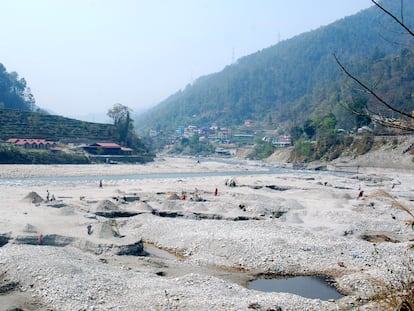Why African birds are seeking refuge from climate change in Spain
Rising temperatures have prompted many species to change their behavior: some have settled in the south of the Iberian peninsula, while others have stopped migrating altogether
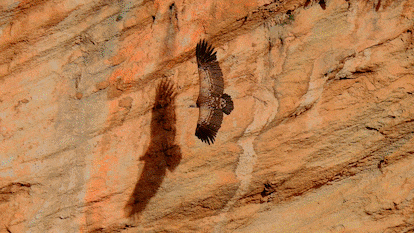
Birds from Africa such as the common bulbul, the little swift and Rüppell’s vulture are colonizing southern Spain while storks and swallows are migrating less to Africa; meanwhile, the bean goose is remaining further north and no longer heading south to Andalusia, while mountain species such as the rock ptarmigan are abandoning lower lying areas. In short, millions of birds are modifying their habits, unwittingly becoming sentinels of climate change as they adapt to the warming weather.
“We are best acquainted with this group of animals and, by monitoring them, we are able to work out what is happening and where, because climate is one of the drivers that is displacing them and they are resettling in areas that have been transformed into favorable habitats in which to live and breed,” explains Antonio-Román Muñoz, professor at the department of Animal Biology at Málaga University.
These new living conditions triggered by global warming bring advantages and disadvantages. On the positive side, Juan Carlos del Moral, social science coordinator for the Spanish Ornithological Society, also known as SEO/Birdlife, points out that in the Euro-African migratory system, which passes through the Iberian peninsula, “birds are beginning to spend winter further north, which prevents them from having to cross the formidable barrier that is the Sahara.”
More negatively, there are imbalances when the birds are not able to adjust their life cycles to the advance of spring, which results in population decline. Here are some of the species that are modifying their habits due to climate change.
The new African colonizers: Rüppell’s vulture and the little swift
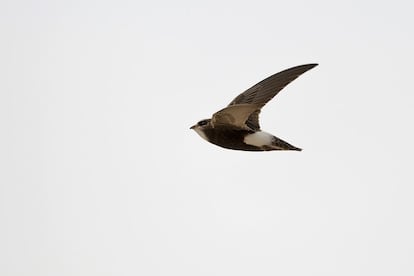
Rüppell’s vulture is a newcomer to Europe. “In the past 20 years, young specimens have been arriving to spend the summer and autumn and then leaving, but now there are adults in Málaga [in southern Spain], although we have not yet confirmed if they have bred,” says Muñoz. It is only a matter of time before this necrophagous bird with a wingspan of up to 2.5 meters – similar to that of the griffon vulture – reproduces in Spanish territory. “The species typically lives in the Sahel [the belt between the Sahara and the Sudanian savanna] and is physiologically suited to warmer temperatures, but the increase of a degree or a degree and a half may be behind the fact that a number of specimens have established themselves here and remain all year round,” he adds.
One bird that does breed in the peninsula is the little swift (Apus affinis). Its first nest was discovered in 2000 in the Sierra de la Plata mountain range in Cádiz and it is already circulating outside the southern Spanish province. The common bulbul, which nested in Tarifa on the south coast for the first time in 2012, has also started to breed there. But unlike the little swift, the common bulbul is having a hard time venturing out of the area, where it has become an attraction for ornithologists and enthusiasts around the world.
The next colonization, according to Muñoz, will be that of a much smaller bird, which is just 13 centimeters long: the house bunting. Twenty years ago, the house bunting had not reached north of Rabat, but it now breeds in Tangier and the Spanish exclave city of Ceuta in North Africa. This year it has been seen on the Iberian peninsula, on the coastline closest to Africa, stretching from Cádiz to Málaga.
Birds that no longer migrate: storks and swallows
Etched into the DNA of species such as storks and swallows is the annual migration from Europe to the Sahel – mainly Mauritania, Senegal, Gambia, Mali, Burkina Faso, Niger and Nigeria – where they spend the winter. But if, thanks to global warming, they enjoy a milder climate in the countries of departure, “why make the dangerous journey across the Sahara?” asks biologist Del Moral. His data shows that a growing number of these birds are not making this journey. In the 1970s, the entire population of European storks wintered in Africa, but now 80% of the adult birds in Spain and Central Europe do not get further than the Iberian peninsula or Morocco at most. The only ones that fly further south are the young birds, which keep the tradition up until they reach sexual maturity at four or five years of age. After that age, they start to remain put.
The dark swallows are less and less willing to fly to Africa at the end of the summer where they used to stay until spring. “There is a very important number that no longer leaves,” says Del Moral. And those that still migrate return earlier because spring comes earlier, “which can kill them because there are no insects, or because it gets cold again and they don’t have time to leave for warmer areas,” he adds. This species has suffered a 33% population decline in the last decade.
Birds in high places: the rock ptarmigan
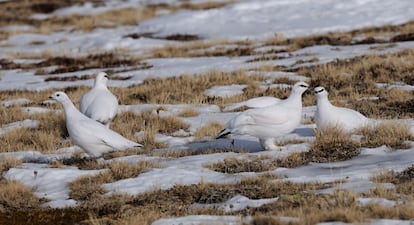
The future of the rock ptarmigan in the Pyrenees, home to the southernmost population in Europe, is not at all promising. For the moment, it is holding out in the highest parts of the mountain range and, according to the censuses carried out in Catalonia and France across 1,000 hectares at altitudes of between 2,100 and 2,200 meters, the population remains stable. “But we know that the bird has disappeared from the peripheral massifs of both the northern and southern slopes,” says Diego Gacía, who works with the Catalan government’s Fauna and Flora Service. One of the main problems faced by the species is the lack of snow; as the rock ptarmigan’s plumage becomes totally white for camouflage in winter. But if the snowfall is delayed, it becomes a beacon in the middle of the mountain, putting it at risk of predators. The increasingly intense rainfall, with hail in spring, has become another major obstacle to survival, causing higher mortality among the chicks.
In other lower lying areas, such as the Sierra de las Nieves National Park in Málaga, the endangered redstart is found at increasingly higher altitudes and the Sardinian warbler nests at 1,800 meters, “something that did not happen 15 years ago,” explains Muñoz. The danger in these mountains that rise to 1,919 meters is that there will be a time when these species reach the summit and when the habitat there is no longer favorable. When that happens, “they will disappear from that area.” In the Sierra Nevada, whose highest point is 3,479 meters, this species of bird has a greater margin.
Birds that keep north: the bean goose
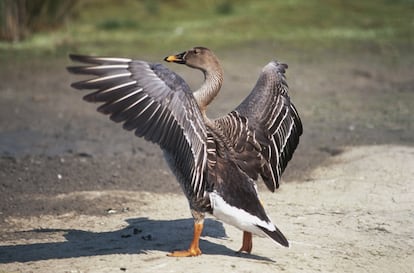
There is not a trace left of the bean goose that used to spend the winter in Spain. Until the 1950s, it was quite common to observe this goose in winter in areas in the north. As SEO/BirdLife points out, their numbers were even greater than those of the common goose. But the decline was relentless and the population was reduced to those inhabiting the lagoons of Villafáfila in Zamora, in the northwestern Castilla y León region, where, in the 1970s, some 5,000 birds from northern Europe – Norway, Sweden, Finland, northern Germany – still spent the coldest months. But they didn’t hold out there either.
“The increasingly mild winters in these places make it easier for them to stay at home where they can find food and don’t have to fly for miles,” explains Del Moral. They are not the only ones; the disappearance of various similar types of birds has been detected in the wetlands of Spain in winter. “This has been noticeable in species such as the Eurasian wigeon, the tufted duck or the larks that used to spread across cultivated farmland to feed,” explains Del Moral.
Tu suscripción se está usando en otro dispositivo
¿Quieres añadir otro usuario a tu suscripción?
Si continúas leyendo en este dispositivo, no se podrá leer en el otro.
FlechaTu suscripción se está usando en otro dispositivo y solo puedes acceder a EL PAÍS desde un dispositivo a la vez.
Si quieres compartir tu cuenta, cambia tu suscripción a la modalidad Premium, así podrás añadir otro usuario. Cada uno accederá con su propia cuenta de email, lo que os permitirá personalizar vuestra experiencia en EL PAÍS.
¿Tienes una suscripción de empresa? Accede aquí para contratar más cuentas.
En el caso de no saber quién está usando tu cuenta, te recomendamos cambiar tu contraseña aquí.
Si decides continuar compartiendo tu cuenta, este mensaje se mostrará en tu dispositivo y en el de la otra persona que está usando tu cuenta de forma indefinida, afectando a tu experiencia de lectura. Puedes consultar aquí los términos y condiciones de la suscripción digital.
More information
Últimas noticias
Most viewed
- Reinhard Genzel, Nobel laureate in physics: ‘One-minute videos will never give you the truth’
- Oona Chaplin: ‘I told James Cameron that I was living in a treehouse and starting a permaculture project with a friend’
- Pablo Escobar’s hippos: A serious environmental problem, 40 years on
- Charles Dubouloz, mountaineering star, retires at 36 with a farewell tour inspired by Walter Bonatti
- Why we lost the habit of sleeping in two segments and how that changed our sense of time


